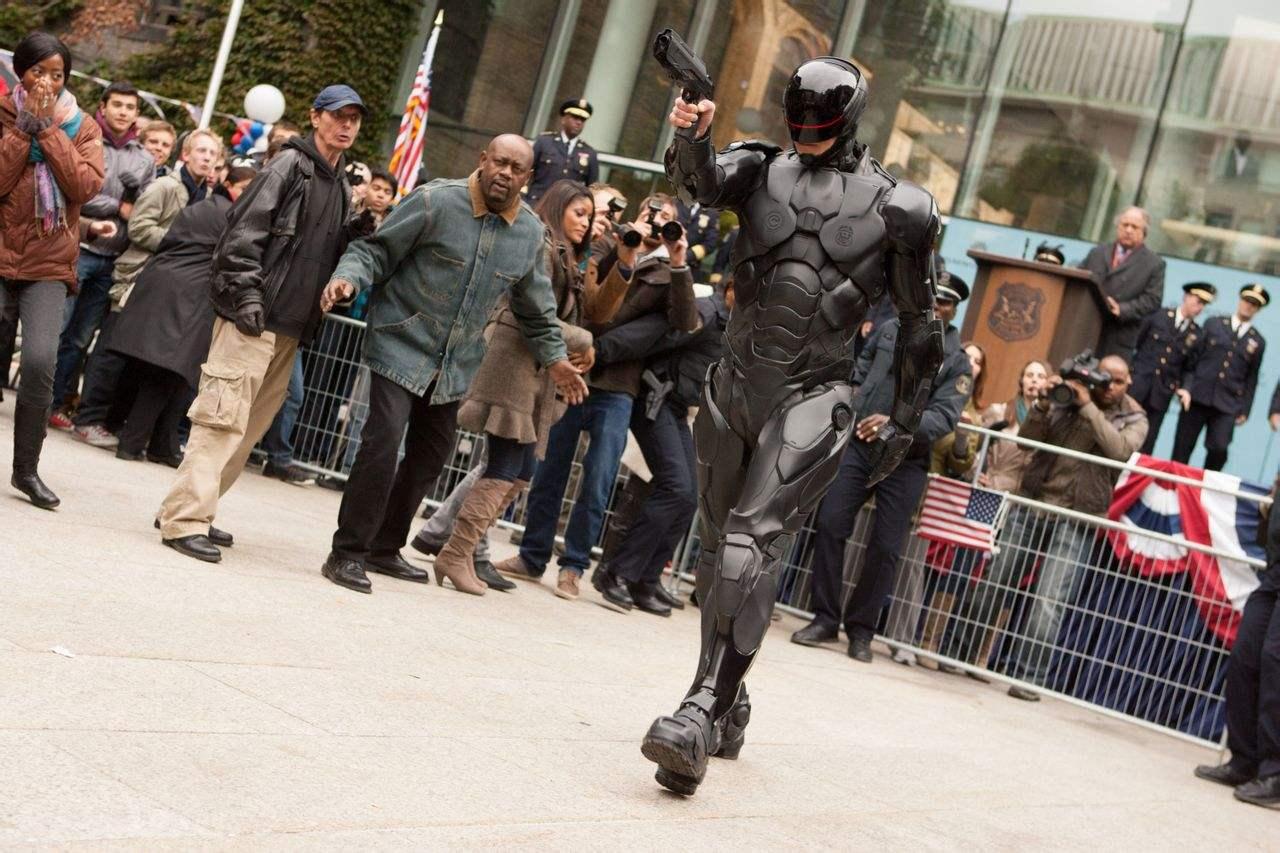The “mechanical policeman”, who once showed his skills in Hollywood movies, is about to officially take up his post in the U.S. police department? Recently, the practice of “allowing mechanical police to kill people” in San Francisco, California, caused heated controversy.
On November 29 local time, after more than two hours of heated debate, the San Francisco Supervisory Board finally passed a draft resolution authorizing the San Francisco City Police Department (SFPD) to allow police robots to use lethal weapons in “emergency situations” by 8 votes in favor and 3 against.
The adoption of the draft resolution has made San Francisco meet the requirement of California Legislature Bill 481, which requires the approval of the appropriate legislature to use military equipment.
The draft resolution was submitted in 2021 by Qiu Xinfu, then a city councillor and current municipal prosecutor. This authorization of the “Mechanical Police Resolution” actively supported by San Francisco City Supervisor Mandelman was originally more extensive, allowing police robots to routinely equip lethal weapons and fully decentralizing the “approval right to fire”.
However, this broad authorization, which was criticized as “let robots kill”, was fiercely criticized by opponents. The resolution finally passed only allowed the use of “fatal police” by a few senior officials when “other means or demotion strategies are ineffective, or conclude that alternative methods cannot subdue dangerous criminals”. Robotic means.”
This is what the SFPD spokesman said in a statement that the deadly “mechanical police” will only be used in extreme cases to save or prevent further loss of innocent lives. However, once the Pandora box, which machines can kill people “kill autonomously”, is opened, people may have to face more unknown fears.

There are many kinds of police robots.
Although organizations opposed to “mechanical police killings” have widely claimed that SFPD has been equipped with retired military battlefield robots, and these “mechanical police” can be equipped with commonly used lethal weapons such as firearms, the SFPD denies this.
Police officers confirmed that the SFPD has a total of 17 police robots, the first of which was purchased in 2010 and the latest one was purchased in January 2022, including three remote control robots that can transport remotely controlled bombs, one for dismantling explosive devices and suspected biochemical devices, and two others. Small robots with relatively simple functions as rescue and auxiliary tasks.
These robots are not suitable for configuring firearms. The main tactic of “lethal robots” conceived by SFPD is to send explosives to a solid bunker hidden by heavily armed gangsters, and then detonate them remotely, and the only suitable for this mission is limited to some robots.
In theory, SFPD’s heavily equipped and unstaffed police reconnaissance auxiliary devices can also be called the most primitive “robots”, but these “robots” have little artificial intelligence attributes and cannot undertake a fatal mission at all.
Although police artificial intelligence is very common in the United States, “mechanical police” has been used to eliminate criminals only once, and it has been as early as 2016.
In July of that year, Michael Johnson, a 25-year-old former army reserve soldier, ambushed and killed five policemen with a sniper rifle in Dallas, Texas, and shouted “Kill White Policeman”. After persuasion and attack failed, the Dallas Police Department Special Police Department stuck the plastic bomb to the back of a book and sent a police robot near the suspect to detonate, killing the suspect.
In February 2018, the grand jury ruled that the police force’s action was legal.
Responding to the rampant vicious crimes
California is a state with a high minority and sharp racial conflicts in the United States. It is also a region where gangs are rampant and vicious crimes are rampant. In particular, Vigodas in North America, such as Hell Angel and the Mexican Mafia, have their baseholds in California, which makes citizens and businesses generally bother about the ineffectiveness of police law and order.
In this context, the San Francisco municipal authorities and some public opinion representatives actively promoted the strengthening of the police force. In September this year, they authorized the police to access private surveillance cameras in real time in some cases to obtain the necessary criminal clues. Authorizing the “mechanical police” to use lethal force is also part of this effort, which is interpreted as “severe security reality forces us to do so”.
As many observers have pointed out, San Francisco and the whole of California are both areas where violent crime and gangs are rampant, and the public is highly dissatisfied with the security situation, but also the stronghold of Democrats on the left wing advocates of restricting police authority such as “progressives” and “black lives are also life”.
In the vote of the San Francisco Municipal Board of Supervisors, Walton, chairman of the board of supervisors, publicly voted against it. In an open letter, he declared that “the ability to kill community members remotely violates the ‘progressive values’ of San Francisco”. When some supporters criticized him for “limiting the ability of the police to work”, Walton said, “I’m not against the police, but to ‘protect people of color’.”
In the past year, the “progressives” have set off a wave of opposition on the Internet. They will “authorize police robots to use lethal weapons”, compared with the semi-bothical and semi-mechanical law enforcer in the two-time remake of the popular blockbuster Mechanical Police, trying to insinuate this move.
Guariglia, a policy analyst of some local “progressive” organizations, such as the Electronic Frontier Foundation, also fiercely opposed it, saying that “this case is endless”. He believes that “not only robots, but also the police should move their fingers away from the trigger.”
Some extrastate “progressives” also echo. For example, Duke University professor McGee criticized the San Francisco Municipal Board of Supervisors’s resolution, calling it “the worst idea” and “making policy decisions from Terminator franchises”.
In response, some citizens who supported the authorization said that “this is reasoning”. Some Chinese who are generally dissatisfied with the local security situation pointed out that vicious criminals, regardless of ethnicity, are in the interests of the community and everyone to crack down strongly.
San Francisco city director Mandelman said that the support of “progressives” and Democrats for restricting police authority is counterproductive. When voters determine that “progressives just want to shelter vicious offenders”, they will not hesitate to vote for the opposition of the Democratic Party, while “progressives” and Democrats will be blinded. “A notoriety of police opponents.”
It has become the forefront of the party competition.
In fact, behind this “mechanical police” controversy is part of the long-term game between the Democratic and Republican parties around social hot spots such as “Black Lives are also Life” that are crucial to the election situation.
In 2015, Obama, then-US President and Democrat, launched an executive order driven by the Ferguson Incident wave, cutting police spending and restricting police authority. In 2017, the successor Republican President Trump signed a counterproductive order.
Under this confusion, day and party disputes, whether all parts of California authorize “mechanical police killings” has become the frontier of the two factions repeatedly sawing and pulling.
Recently, in Auckland, where the overwhelming majority of “progressive” voters are close to San Francisco, the police abandoned a similar authorization plan due to the unreligent siege of “progressives”.
In San Francisco, where Chinese and East Asians attach more importance to the dominated social security ethnic group, the opposite is true – despite the momentum of the “progressives” before the board of supervisors voting, the disparate voting results prove that the city’s “silent majority” would rather choose a little more community safety.
It is conceivable that the debate of whether the mechanical police are allowed to kill will continue to be hijacked and distorted by party disputes and ethnic groups. It is entangled in anti-corruption all parts of the United States. The focus of the dispute will increasingly deviate from the incident itself and become a headless case that is justified and reasonable.
In this complex noise, someone reminded everyone on the online social platform, “Who still remembers the three laws of robotics”?
The “Three Laws of Robots” initiated by the great science fiction writer Asimov and jokingly referred to as the “Robot Constitution”, that is, first, robots shall not harm human beings or sit and watch human beings hurt”; second, robots must obey human orders unless the order conflicts with the first law; third, robots can not violate the first and The second law premises self-defense.”
This was once recognized as the three “iron laws” that the use of artificial intelligence took for granted. But now, with the official arrival of the deadly “mechanical policeman” and Pandora’s box is half-opened, how convincing and binding is this “iron law”? Against the current background of the rapid development of artificial intelligence, this may really require the high vigilance of human society.



